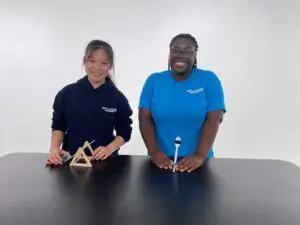Activity Content Sections
Instructions
Relevant Terminology
Buoyancy: An object’s ability to float in water or other fluid.
Positively buoyant: An object that is less dense than water and, therefore, floats on the surface.
Negatively buoyant: An object that is denser than water and, therefore, sinks to the bottom.
Neutral buoyancy: An object with density equal to water and, therefore, neither floats on the surface nor sinks fully to the bottom.







Leave feedback form
Thank you! Your submission is processing.